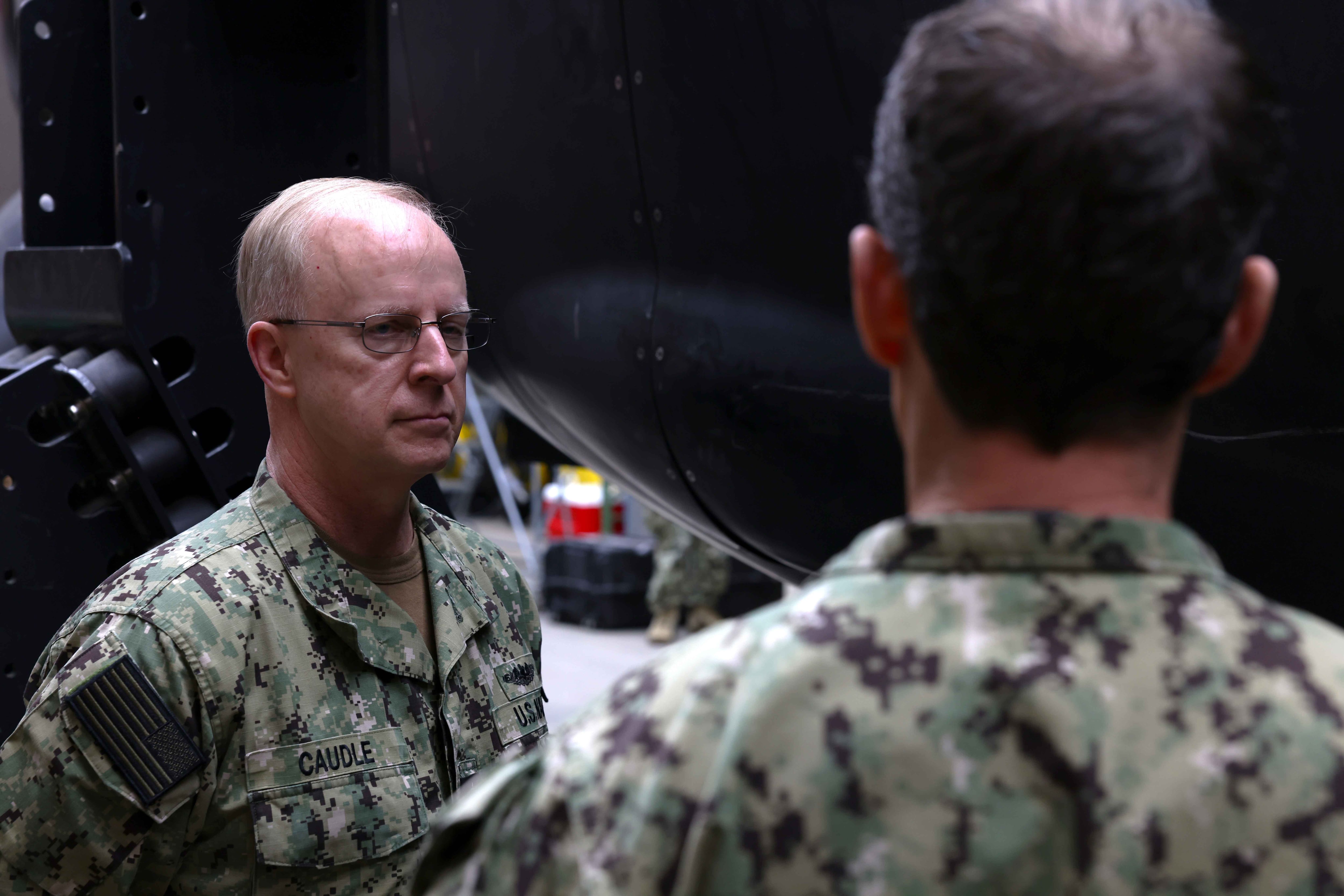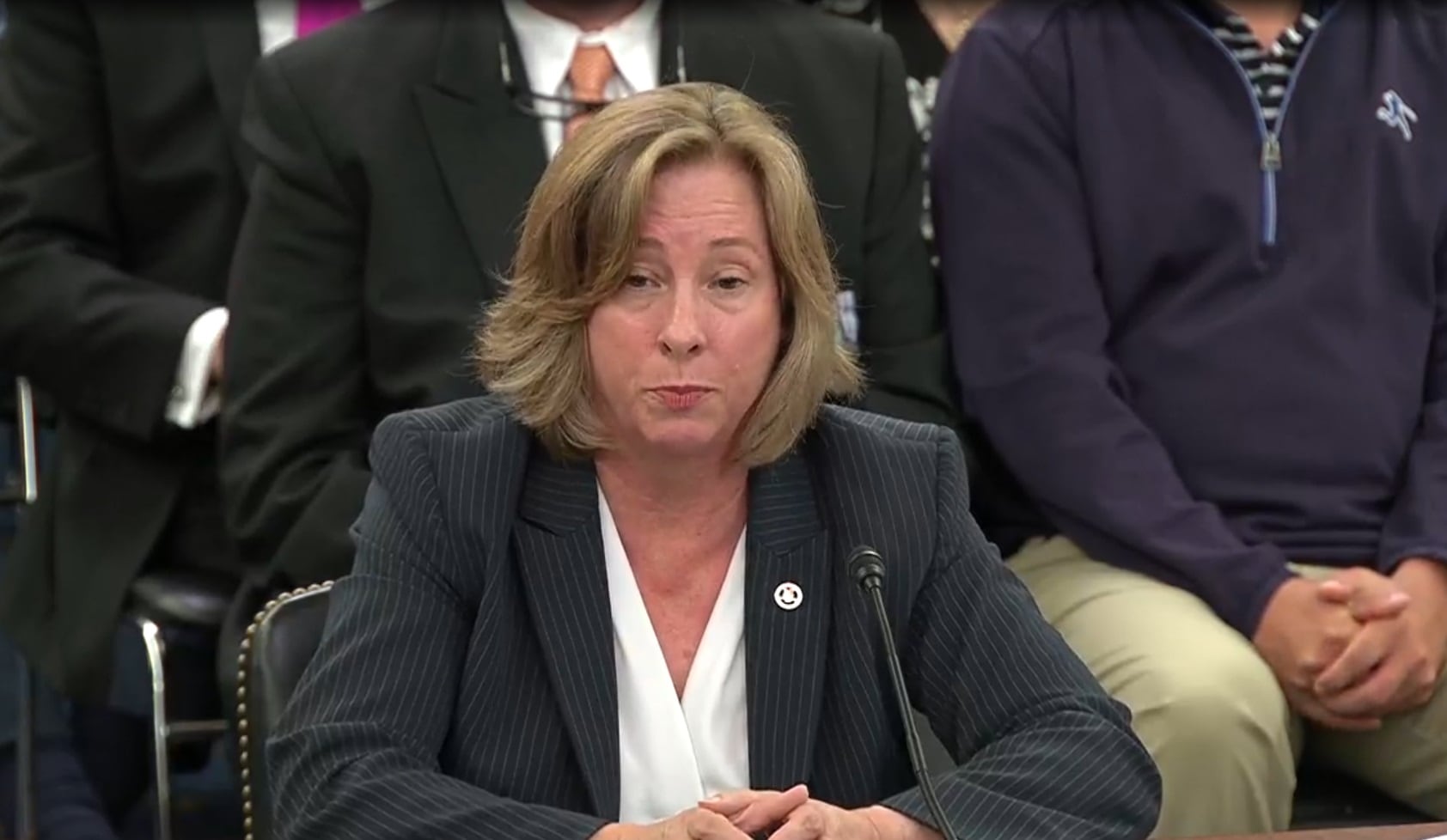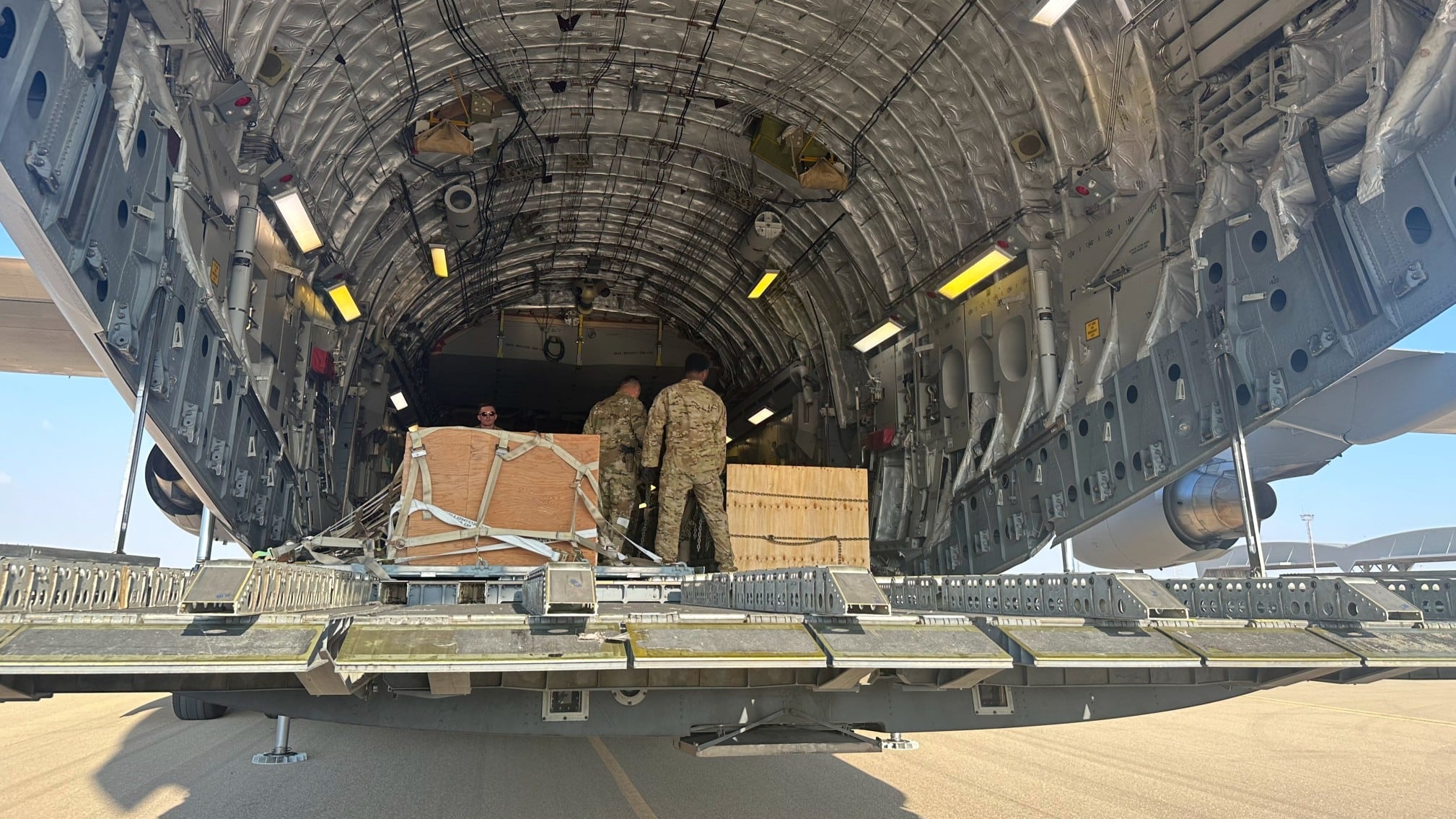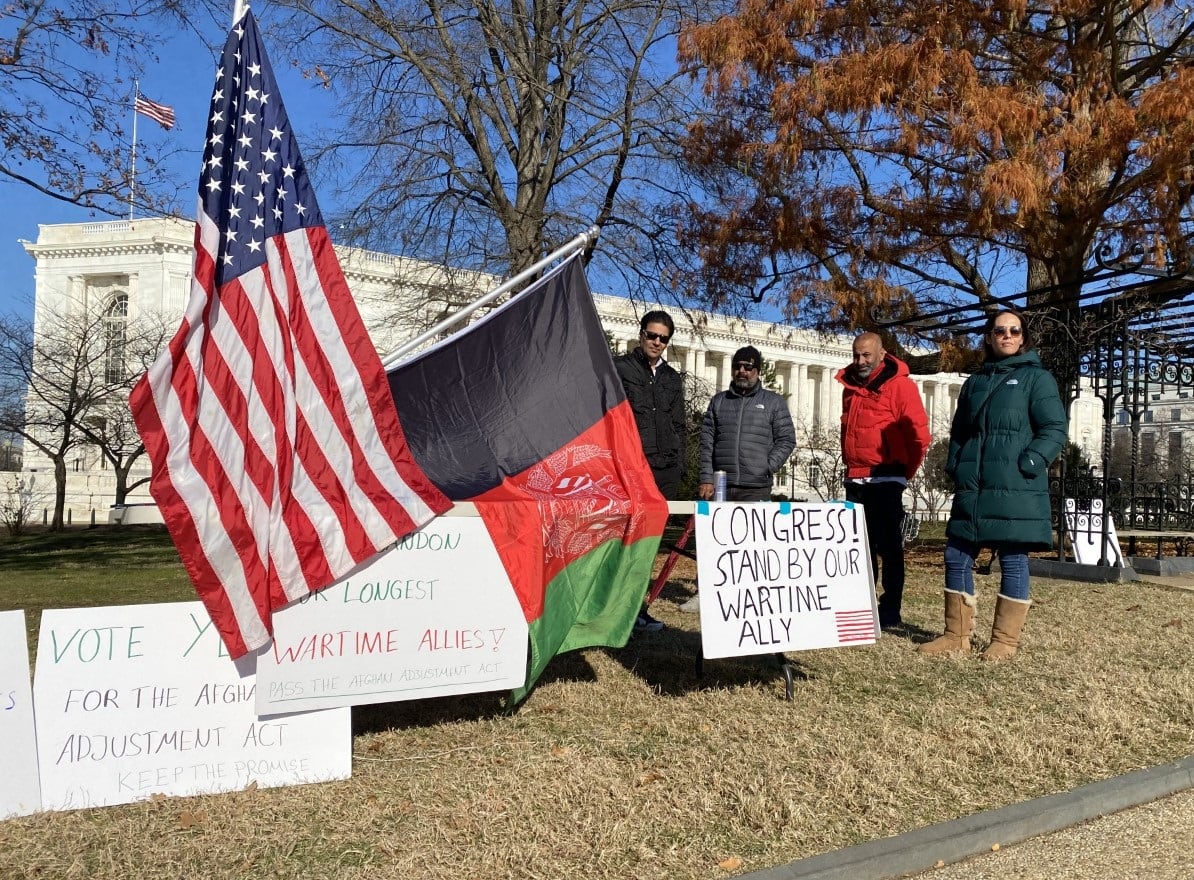The Navy held a remembrance ceremony Monday honoring the 17 sailors killed in the jihadi bombing of the guided-missile destroyer Cole in Yemen 20 years ago.
The Cole was conducting a scheduled refueling in Aden Harbor on Oct. 12, 2000 when a small boat filled with explosives detonated and blew a 40-by-60-foot hole in its hull some 16 feet below the water line, badly damaging its engine room, galley and living quarters.
In addition to those killed, 37 more sailors were wounded during the attack.
A small crowd of Gold Star families and others were seated facing the ship docked at Norfolk Naval Station’s Pier 12. The Cole was adorned with red, white and blue ribbons, her crew lined its upper decks facing the crowd.
Set against the gray of the ship’s starboard, a wreath hanging near where the jihadi bomb struck, Navy Adm. Christopher W. Grady, commander of U.S. Fleet Forces Command, honored the fallen sailors and recognized their families in attendance.
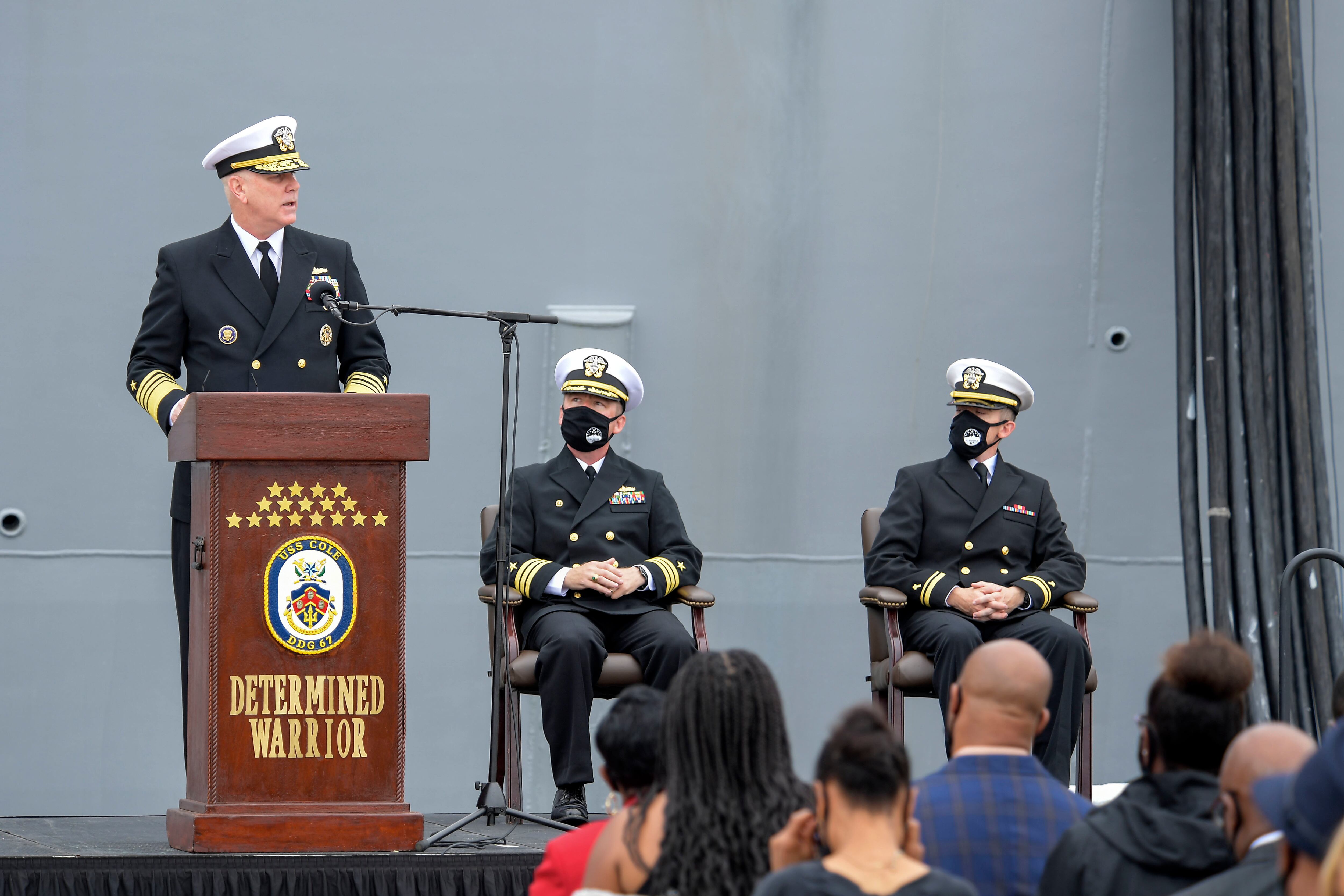
“Nowhere was that event felt more deeply than right here with the families, the friends, the shipmates of the 17 sailors we lost,” Grady said during the event, which was also livestreamed online. “We stand with you, we support you, and we will never forget your sacrifice.”
Grady, who served as the Cole’s commanding officer on its first overseas deployment following the jihadi attack, recognized Mona Gunn, former national president of American Gold Star Mothers. Her son, Cherone Gunn, was killed in the attack on the Cole.
“Mona, I applaud you for keeping alive the memory of your son, Cherone, by serving others and perpetuating the noble principles and ideals which he served,” Grady said.
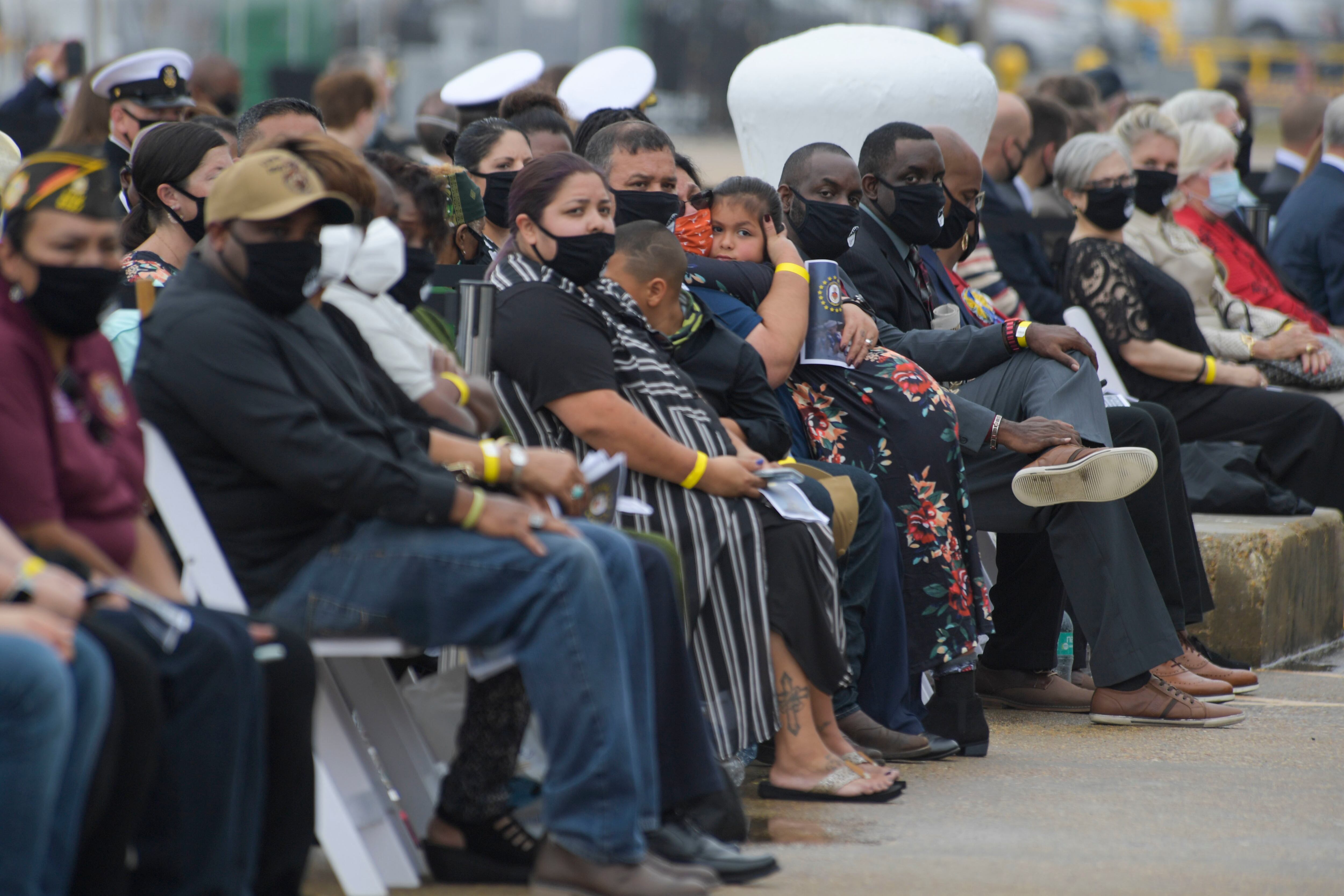
The Navy learned a few lessons from the attack, most notably that a ship’s crew needs to remain vigilant. In the years that followed the bombing of the Cole, the Navy developed new training scenarios modeled after the Cole bombing and others to help better prepare sailors for catastrophe.
Battle Stations-21 is an intense 12-hour culminating exam meant to test the knowledge Navy recruits have gained in their eight weeks of boot camp. The test includes a series of scenarios simulating an attack at sea and requires recruits to stop the flooding of compartments and fight fires aboard a replica destroyer to save the ship from sinking and prepare to defend a second attack, much like the crew of the Cole successfully did 20 years ago.
“These recruits are getting out of it exactly what’s intended and that is that emotional shock and to go through some fear, and no place else does that like we do it,” said Jason Mosher, a former crewman who survived the Cole attack and a current Battle Stations simulation operator, in a prepared video played during the memorial.
Mosher, who also attended the memorial, was in the mess line aboard the Cole when it was attacked.
“There’s this huge, loud, very sudden and brief popping sound and everything went dark and quiet and there was an acrid smoke in the air,” Mosher said. “It was surreal, to say the least, and for myself and those around me it took a moment for any rational thought of what to do kicked in.”
The efforts of Mosher and the rest of the Cole crew to save the ship lasted for three days. Mosher, a fire controlman, said the fight was sustained and no one rested during that time.
The first scenario in Battle Stations takes place on a mess deck, which is made to look as if it were destroyed by an explosion.
“The rest of the details are … designed to impress what might actually happen to people in such an attack on the recruits,” Mosher said. “It has a pretty powerful effect.”
The clock on the mess deck of the replica ship is set to the time the Cole was attacked, 11:18 a.m.
“The clock is the biggest one, though,” Mosher said. “The clock being set to the time is significant to me. It’s a good way, I think, to memorialize the Cole in a really tangible way.”
Retired Adm. Bob Natter, who served as the last commander in chief of the U.S. Atlantic Fleet and first commander of Fleet Forces Command from 2000 to 2003, recounted the attack on the Cole.
“Seventeen of our sailors, your sons and daughters, your brothers and sisters, your fellow shipmates are killed and 37 are wounded,” Natter said. “Despite the severity of that blast, the Cole is kept afloat only through the herculean damage-control efforts of the crew over several days all while standing ready to defend the ship against a possible second attack.”
Natter compared the attack to the one the U.S. sustained in Pearl Harbor on Dec. 7, 1941.
“Except, Cole was all alone in Aden and the entire crew knew there was no immediate help close by, but they also knew there was no giving up,” Natter said. “Cole answered the call that day. They answered the call to general quarters. They answered the call to duty exactly as they had sworn their oath to do and exactly how they were trained to do.”
After two weeks, the Cole was repaired and sent underway "sending a clear unmistakable message, Natter said.
“Cole left Aden Harbor with her battle ensign flying high and our national anthem blaring on the ship’s 1MC so that everyone in and around Aden Harbor knew the Cole was coming back.”
Natter, who began having trouble delivering the emotional words, said he would never forget the funerals he attended or the families he attempted to comfort during that time.
When he retired in 2003, Natter had the Cole moored alongside the pier “to highlight the Cole was back and to highlight that there was no other ship in the entire Atlantic Fleet for which I was more proud during my three years as the fleet commander,” he said. “We must never forget our duty. Remember the Cole.”
Cmdr. Edward Pledger, the Cole’s current commanding officer, also spoke of those killed in the attack, their memories embedded in the deck of the mess line, where many of them stood to receive their lunch, he said.
“These stars, 17 brass stars proudly shined every morning by Cole sailors are a tribute to the 17 Cole heroes who made the ultimate sacrifice,” Pledger said. “Those stars remind me of how my crew are a direct reflection of the Cole heroes and the ‘Determined Warrior’ ethos.”
Jared is the manager of print design for Sightline Media Group's five magazines under the Military Times and Defense News banners.

